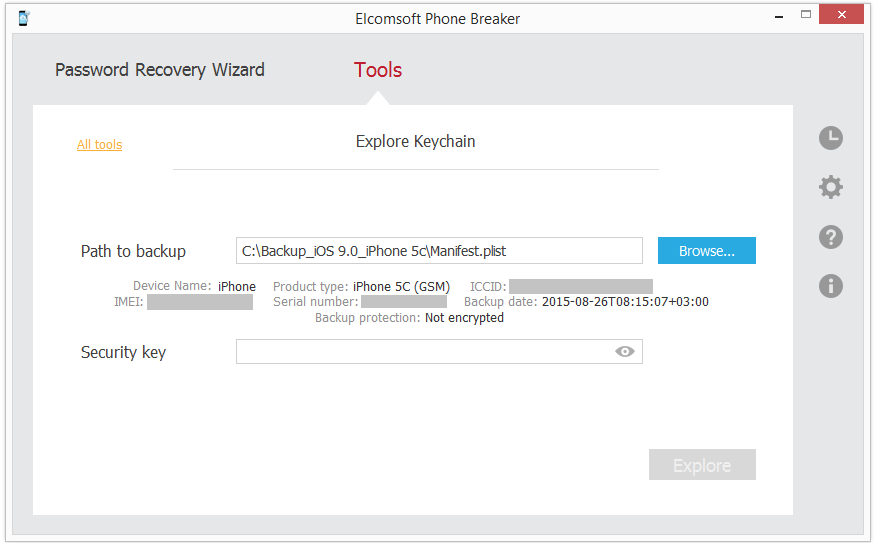
- #Elcomsoft phone password breaker serial 5.30 update#
- #Elcomsoft phone password breaker serial 5.30 code#
To route data over LDAP, we would write data into one of the attributes and read the data from the other network segment. To achieve this, however, is up to the reader and beyond the scope of this blogpost.
#Elcomsoft phone password breaker serial 5.30 code#
To route data over LDAP we need to get code execution privileges first on workstations in both segments.

This will work, regardless of the security settings of the workstation, since the account will communicate directly to the domain controller instead of the workstation. If we have access to a user account, we can use that user account in both network segments simultaneously to exchange data over Active Directory. This means we can use Active Directory as a temporary data store and exchange data between the two isolated networks by writing the data to these attributes and then reading the data from the other segment. The complete list of attributes can be found in the following article: īy default, every user that has successfully been authenticated within the same forest is an ‘authenticated user’.

This property set contains 40+ attributes that users can read from and write to. The permissions set in the screenshot above provide access to the attributes defined in the Personal-Information property set. Below is a screenshot that displays the permissions for public information for the Authenticated Users identity. Personal information, such as a telephone number or street address, is by default readable for every authenticated user in the forest.

This is configured in the Active Directory schema, as can be seen in the screenshot below. No special privileges are needed for this, since this information is writable for the identity SELF, which is the account itself.
#Elcomsoft phone password breaker serial 5.30 update#
For example, users can update personal information such as telephone numbers or office locations for their own account. By default, user accounts have write permissions on some of these attributes. This information is stored in attributes. In Active Directory, user accounts are objects to which extra information can be added. While we did have physical access on workstation in both network segments, we wanted to control workstations in network segment B from the internet.īoth network segments were able to connect to domain controllers in the same domain and could interact with objects, authenticate users, query information and more. In this example, workstations in segment A were able to reach the internet, while workstations in segment B could not. We had physical access on workstations in both segment A and segment B. This is what it looked like from a high-level overview.

Because of cost/workload efficiency reasons, the client chose to use the same Active Directory domain between those network segments. This client had multiple networks that were completely firewalled, so there was no direct connection possible between these network segments. This blogpost will go into detail about the development process, how the tool works and provides mitigation advice.Ī couple of months ago, we did a network penetration test at one of our clients. For this, it uses the LDAP protocol which is commonly used to manage Active Directory, effectively routing beacon data over LDAP. To control workstations in both segments remotely with Cobalt Strike, we built a tool that uses the shared Active Directory component to build a communication channel. These networks contained workstations joined to the same Active Directory domain, however only one network segment could connect to the internet. Rindertkramer audits, Blog, Cobalt Strike, pentest, Uncategorized March 19, 2020Ī while back during a penetration test of an internal network, we encountered physically segmented networks. LDAPFragger: Command and Control over LDAP attributes


 0 kommentar(er)
0 kommentar(er)
